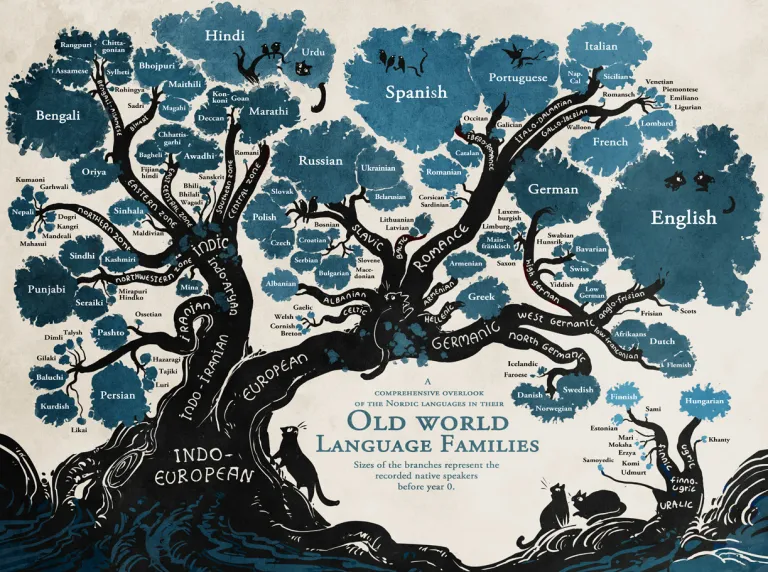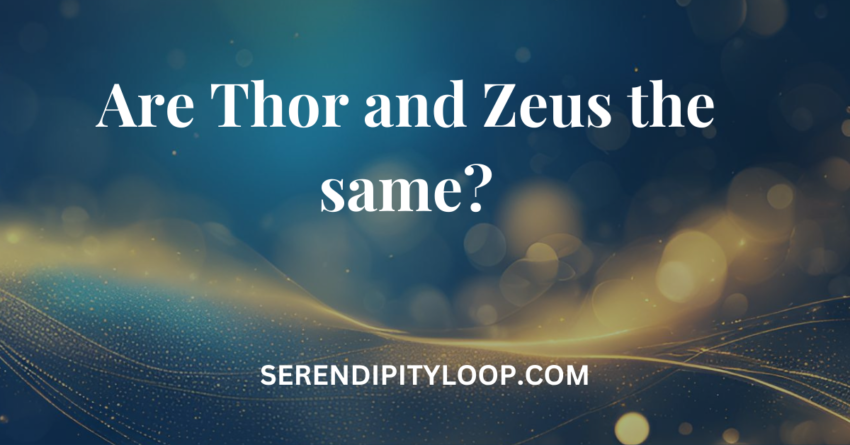I came across this question online a few days ago and it made me pause and scroll back up. Wait, wait, wait. Is this person confusing Thor with Zeus? It’s an easy mistake to make, given how often ancient gods appear in popular media. Or are they asking a genuinely more fascinating question: Is Thor the Nordic equivalent of the Greek Zeus?
Now, before I continue, I have a confession to make. I adore mythology. As a child, my favorite book was about the Greek gods by the Stephanides Brothers. I was so obsessed with it that I read it until the pages started falling apart. Eventually, I had to retire the book to a safe shelf, where it could enjoy a well-earned rest under a blanket of dust bunnies, free from the risk of any more pages falling out.
This was only the start of my lifelong fascination with mythology. As I grew older, I devoured every book on Greek mythology I could find. I also dipped my toes into Nordic and Celtic myths, and even explored more obscure legends from Polynesia and Mesoamerica. Now imagine my pure delight when as a bright-eyed first-year university student, I discovered the field of comparative mythology.
What is comparative mythology?
Comparative mythology is based on the observation that mythologies (or religions) share common characters and themes. These similarities likely date back to a time when our ancestors shared similar beliefs and bedtime stories before spreading across the globe. Even before the first organized religions, our ancestors engaged in rituals and created stories to explain natural phenomena and make sense of the world around them. We seldom realize how much these ancient myths have influenced modern religions and, more specifically, popular culture.
A great example is the story of the Flood. In this myth, a divine flood is sent to punish mankind. However, one special individual receives a divine warning to build a boat. He follows the instructions just in time, as the great flood arrives and a terrible storm rages for seven days and seven nights. After the flood, he disembarks on a mountain and repopulates the earth. You probably recognize this as the story of Noah from the Bible. But wait! This plot also appears in an ancient Sumerian myth featuring Ziusudra. And again in an Akkadian myth featuring a similar character, this time called Atrahasis. And once more in the Babylonian epic of Gilgamesh with Utnapishtim. And variations of it are also recorded in Greek and Hindu mythology.

The story of the flood is particularly prevalent in the Near East, where early civilizations along the Tigris and Euphrates rivers experienced regular flooding. These tales of a catastrophic flood were likely passed down through generations, with details and names changing but the central motif remaining the same.
Something similar occurred further north, around the Black and Caspian Seas, among a group of people referred to as Indo-Europeans. Living in the steppes, they were likely among the first to domesticate horses. They shared a common Proto-Indo-European language, and a common mythos. As they spread out from their ancestral homelands, they took their language and religion with them. Those who went south became the Persians, those who went east reached the Indus Valley and became Indians (Hindus), and those who went west became Greeks. Later, other groups arrived, each with a slightly different dialect, including Italic (Roman), Germanic, Slavic, Celtic, and Baltic.
Indo-European mythologies
Today, the term ‘Indo-European’ is primarily linguistic. Most European languages, with a few exceptions like Finnish, Estonian, and Hungarian, belong to the Indo-European language family. You may have noticed how Spanish and Italian sound similar, how Danish and Swedish are alike, and how knowing German makes understanding Dutch easier. The Indo-European language tree also includes Icelandic, Polish, Russian, Ukrainian, Latvian, Lithuanian, Gaelic, and Hindi, among others.

Linguists study these shared origins through ancient words. Take the word ‘daughter’, for example. Compare it in various modern and ancient languages: ‘dotter’ (Norwegian and Swedish), ‘Tochter’ (German), ‘dochter’ (Dutch), ‘duktė’ (Lithuanian), ‘дочка’ (dotchka, Russian), ‘duster’ (Armenian)‘, dohtor’ (Old English), ‘dohtar’ (Proto-Germanic), ‘dottir’ (Old Norse), ‘dauhtar’ (Gothic), ‘dušti’ (Old Slavonic), ‘thugater’ (Ancient Greek), ‘duhitr’ (Sanskrit). All trace back to the Proto-Indo-European word ‘dughter’. Similar patterns appear with words like ‘mother’ (‘mitera’ in Greek and ‘maatr’ in Sanskrit) and ‘father’ (‘patera’ in Greek and ‘pitr’ in Sanskrit).
As time and distance increased, unique cultures and languages developed, but traces of their proto-mythology remain. Just as we see common roots in languages, we find recurring characters and themes in mythologies. These include a male sky god, a female earth goddess, deities of the sun, moon and the dawn, a pair of twins, a trickster figure, and a hero who slays monsters. There are also common story themes, which include a thunder god defeating a multi-headed beast, tales of two brothers with one sacrificing the other, and depictions of an underworld accessible only by crossing a river.
Greek vs Norse mythology
Greek mythology is undoubtedly the best-known of the ancient mythologies and one that is deeply embedded in Western culture. Who doesn’t know the stories written by Homer, of Odysseus and the Trojan War? When I was a kid, it seemed like Greek mythology was everywhere in popular media. There were the Percy Jackson books, the movie Troy, and of course the popular TV series Hercules and Xena: Warrior Princess (such a badass show and character!). These days, the influence of Greek mythology in popular media seems to have waned, giving way to Norse mythology. Neil Gaiman’s American Gods prominently features Norse mythology (among other myths, to be fair). Vikings have also become a popular TV trend in recent years, and while they don’t typically feature mythological characters, they have popularized concepts from Norse sagas, such as Valhalla and Ragnarök. And of course, the Marvel Cinematic Universe has made characters like Thor, Loki, and Odin household names.
Zeus vs. Thor
Zeus was the head of the Greek pantheon and seems to be the direct equivalent of the Proto-Indo-European sky god, known for wielding thunderbolts. He was also known as the bringer of rain and the spreader of justice. However, I mostly remember Zeus from the myths as a hopelessly horny dude who went around impregnating women. I kid you not, but in one of the stories, he fell in love with a woman called Danae and entered her room as a shower of golden rain (nope, still not joking), thus fathering the Greek hero Perseus. Well, that’s Zeus for you.
Now Zeus and Thor do have something in common: Zeus wielded thunderbolts, and Thor was the god of thunder. The name Thor literally means thunder. But that’s where their similarities end. Thor was practical, predictable, and trustworthy. His job was to battle giants and other monsters, and he enjoyed a good feast. Known for his bravery and strength, Thor was more similar to another Greek monster-fighting hero – Hercules. Both Thor and Hercules were overly confident and stubborn, often leading them into tricky situations. And they were both sons of the ruler of the gods (Hercules’ father was Zeus, and Thor’s father was Odin).
As for Zeus, if anyone has to be his equivalent in Norse mythology, the closest analog would be Odin (or the Old Germanic name ‘Wodan’) himself. As the head of the Norse pantheon, he wasn’t a warrior but a wise and cunning leader. Like Zeus, he was also known to do some morally ambiguous things, like disguise himself and use deception to achieve his goals. However, he is not particularly associated with the sky in the same way Zeus is, making it hard to consider him a sky god. Rather, Odin dealt in various forms of magic, interacted with the souls of dead warriors, could change into animals, and is associated with the myth of the Wild Hunt, where a ghostly band of hunters and hounds flew across the midwinter sky. As such, Odin was more related to death and the otherworld.
So, the answer to the question whether Thor and Zeus are the same, is a resounding no. Thor and Zeus are not the same, far from it. While both are associated with thunder and lightning, that’s where their similarities end. The closest equivalent to Thor in Greek mythology is Hercules, and for Zeus, it would probably be Odin.






